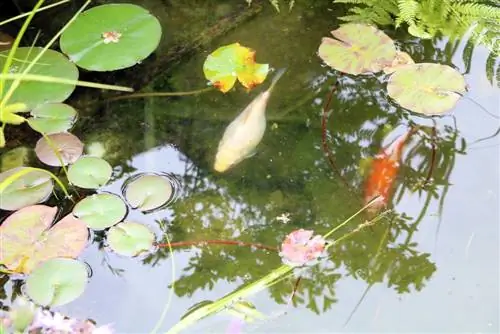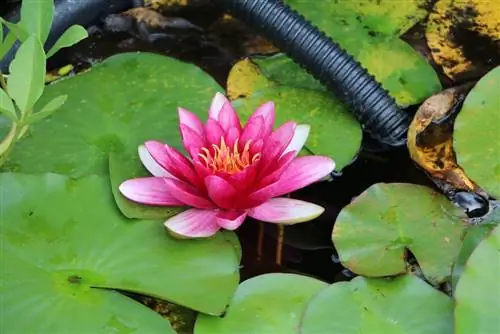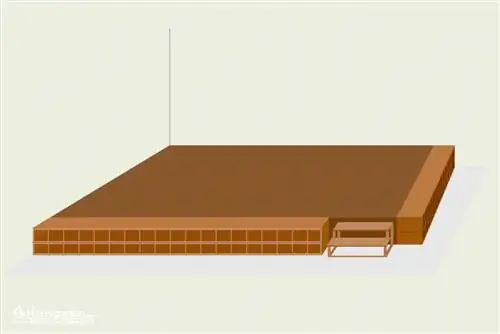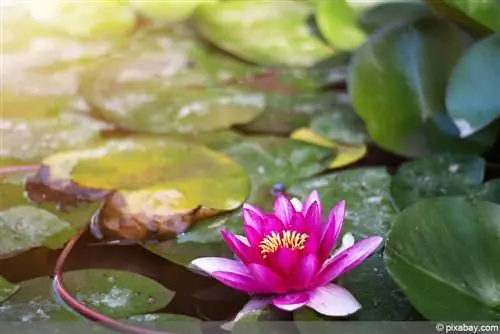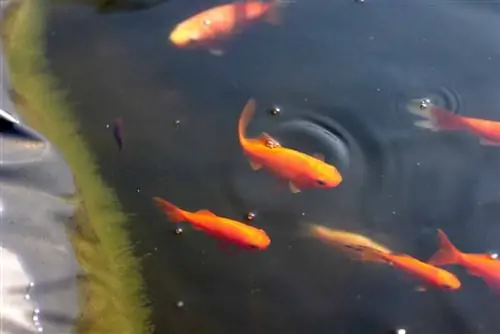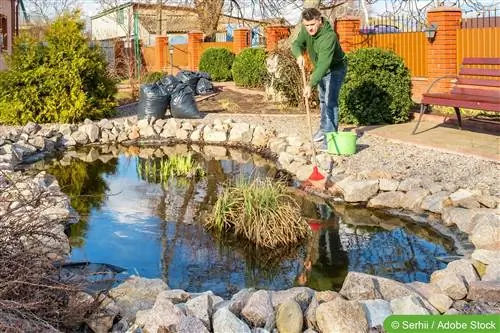- Author admin [email protected].
- Public 2023-12-17 03:39.
- Last modified 2025-06-01 06:48.
The slides have all the advantages and disadvantages, there is no such thing as an absolutely perfect one where everything fits. If the price is right, there is definitely a shortcoming and if almost everything fits, the film is extremely expensive. The “golden” mean is often chosen, the film that is most environmentally friendly, reasonably easy to lay and repair and not quite as expensive. In any case, you should always seek good advice. It is important that it does not contain any recycled film. Toxins are often found in them. The deeper a pond is, the thicker the film has to be in order to withstand the great pressure. A layer of sand is also important to protect the film, as is a fleece that is laid under the film.
Various materials
PVC film (polyvinyl chloride)
- Most frequently used pond liner
- Very soft, flexible material, high stretchability, high resilience
- Best Price
- Can be processed very well in warm temperatures, including gluing
- Ideal for small and medium-sized ponds, even for complicated pond shapes
- Tends to form wrinkles, but so do other films
- Lifespan up to 20 years (with good workmanship)
- Does not tolerate sunlight and should therefore be well covered everywhere
- Available in several colors, black, brown, olive, blue, beige
- It used to often contain plasticizers, including stabilizers and chlorine. It's better to find out what's in it today.
PE film (polyethylene)
- Eco-friendly, recyclable
- More expensive
- About 30 percent lighter than PVC
- UV-resistant
- Convenient for streams and shallow waters
- Larger sheet widths available, which means they can often be laid in one piece
- Inflexible, quite stiff, therefore harder to process
- Working with hot air
- Not flexible enough for small ponds
EPDM film (ethylene propylene diene monomer)
- Made of synthetic rubber
- Good processing options
- Also for large ponds
- High stretch and tear resistance
- Very UV resistant
- Expensive
- Fish and plant friendly
- Cold and heat resistant, from -40 to +40°C
- Ideal for difficult ponds
- Longest lifespan
- In black, olive and sand colored
- Subsequent wrinkling possible
- Damage can only be repaired by vulcanization
PVC pond liner is best for laying. It is also the most popular foil and is used the most. It is important to only lay them at temperatures above 15°C. Then the film becomes more supple and can be easily processed.
Lay pond liner wrinkle-free
Laying pond liner without wrinkles is particularly important for koi and bathing ponds. This enables uncomplicated care. It is often necessary that pipes and technology can be installed. The right substrate is particularly important when laying the pond liner. Sharp stones and roots must not come into contact with the film. That's why a bed of sand above the ground is ideal. A protective fleece should definitely be laid over it. Both measures enable easy access to the pond later. The pond can be easily entered without damaging the liner.
Preparations
- Outline the outline of the pond. The best way to do this is to use sand, thick string, sawdust or something similar
- Dig a pond. Clearly demarcate different terraces (swamp zone, shallow and deep water zone)
- Solidify all areas
Apply a layer of sand
Work thoroughly. Stone should be sorted out now to avoid causing damage later. You can also distribute the sand evenly with a rake or use a long board or large spirit level.
Lay out protective fleece
- The fleece must be attached to the edges so that it does not slip when the pond liner is rolled out.
- Do not use sharp or pointed things to attach as they could damage the film
Laying pond liner
- Calculating the quantity - add the pond length and pond width, plus twice the pond depth and twice 50 cm for the edge
- The pond liner is often delivered on a pallet, professionally folded. In order to be able to lay it without wrinkles, it should be folded like a fan on the short side and rolled up on the long side.
- The pallet should be placed at the corner of the pond if possible.
- The pond liner is unrolled along the longer side of the pond.
- Then unfold the film, folded like a fan, into the pond pit. The layers are simply pulled apart. It's best to work with several helpers, depending on the pond size
- It is essential to avoid tensions and tensile loads.
- Create cable shafts for electrical installations, water pipes for pumps and the like
- Once the foil is laid out, you can see numerous small wrinkles. These should be pulled together towards the corners of the pond so that a larger fold is created. This is then folded backwards. It can also be glued to make it last.
- Weigh down the edge of the film with stones, strips or plates.
Tip:
Wear appropriate footwear with rounded rubber soles in which no stones can get stuck. These could damage the pond liner and even press holes in it. If necessary, you'd rather work barefoot.
Fill the pond slowly, only about a third
- Press any remaining wrinkles onto the surface. The film is pulled deeper into the pond from the edge, just by the weight of the water.
- Let the water stand like this for at least a day before continuing to work
- Spread pond substrate or pebbles on the depth levels
- Continue filling with water
Tip:
It is ideal to build a capillary barrier so that you avoid water loss through the adjacent plants.
- The easiest way to do this is to climb a small hill about 10 cm high around the pond.
- Immediately behind it, a 10 cm deep trench is dug.
- The pond fleece and the foil must be laid over the hill into the ditch.
- The ditch can be filled with river pebbles or other stones for its appearance. There must be no connection between water and surrounding soil!
Conclusion
When laying pond liner, it depends on which liner is used and how thick and therefore how heavy it is. Small ponds are quite easy to make, but for larger ones it is better to get helpers. Today, pond liners are usually delivered in a package, they are already welded or glued, you no longer have to put the sheets together yourself like you used to. That makes things a lot easier. The substrate is very important for pond liners. Stones and roots can damage the film from the outside, especially if water is let in. Depending on the volume of the pond, the water has a high weight. That's why the sand layer is important and also the fleece. Some small wrinkles usually form, simply due to the shape of the pond. They are combined into one or two larger ones, which are then folded back. All of this is pretty easy. The capillary barrier is also important, as it protects against water loss.

